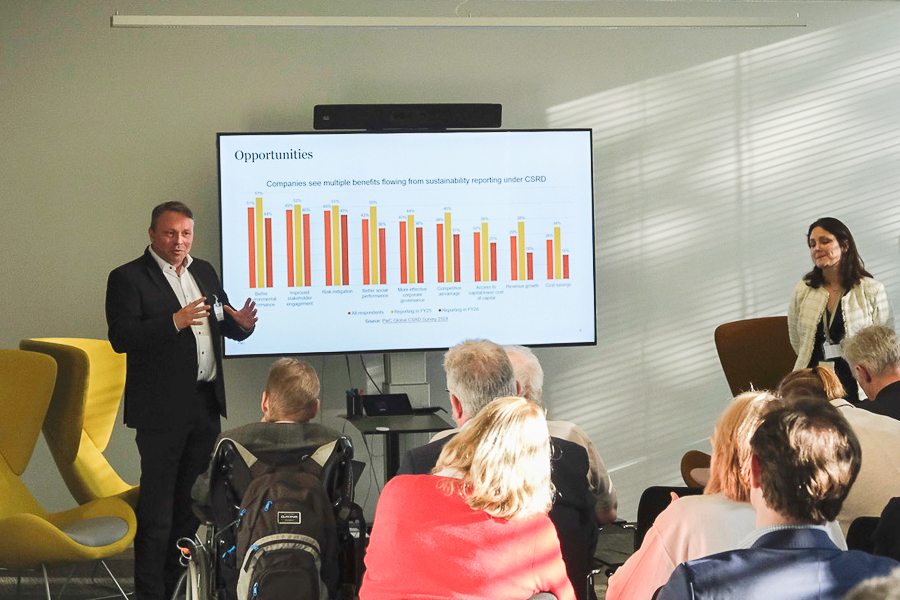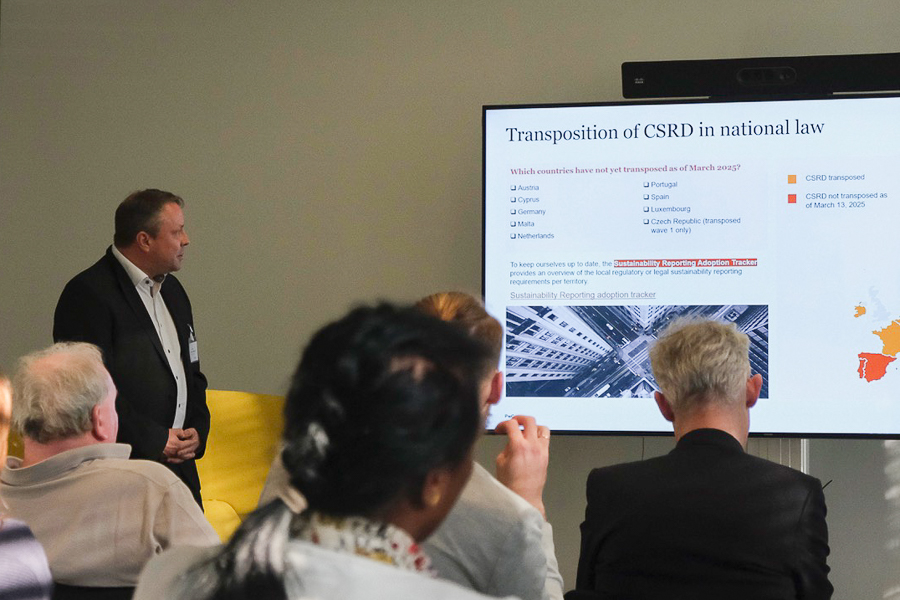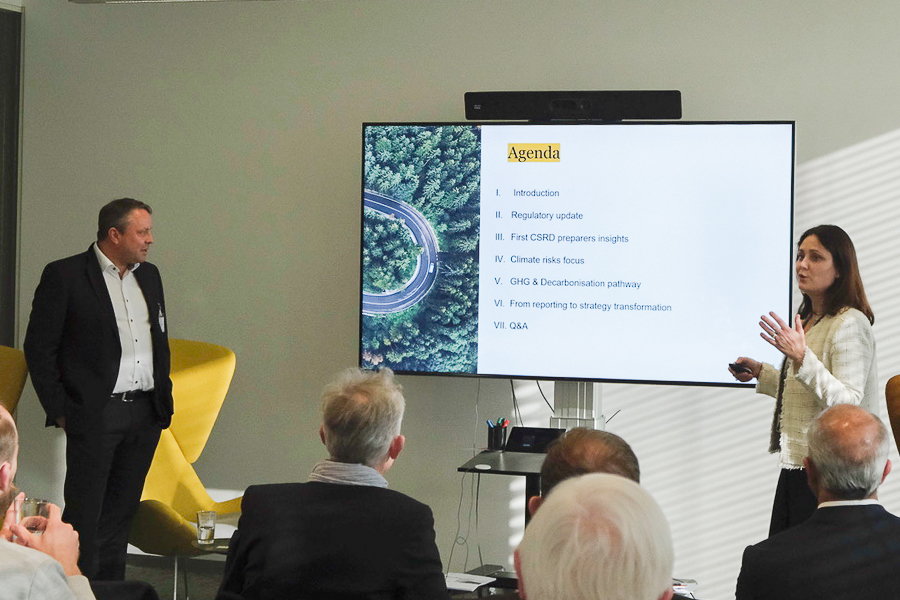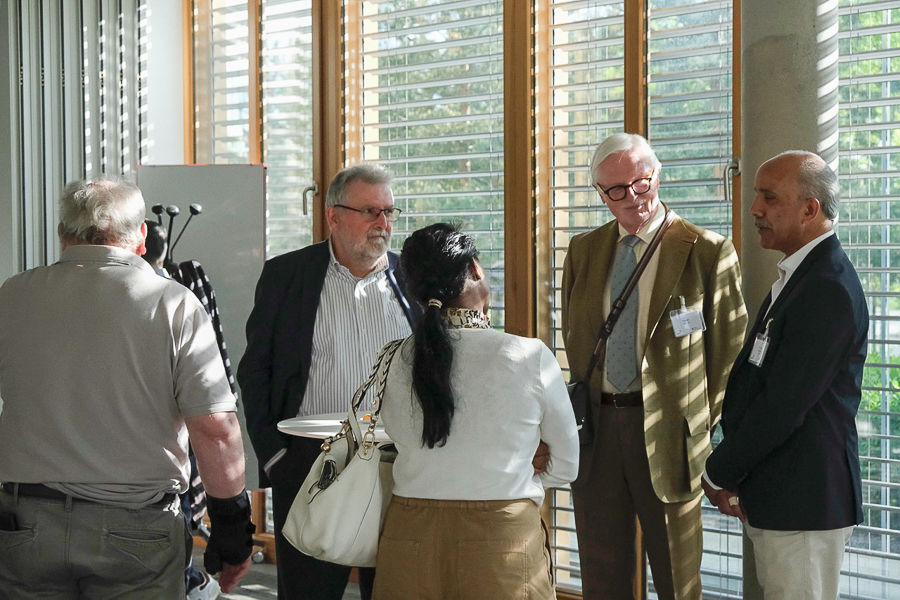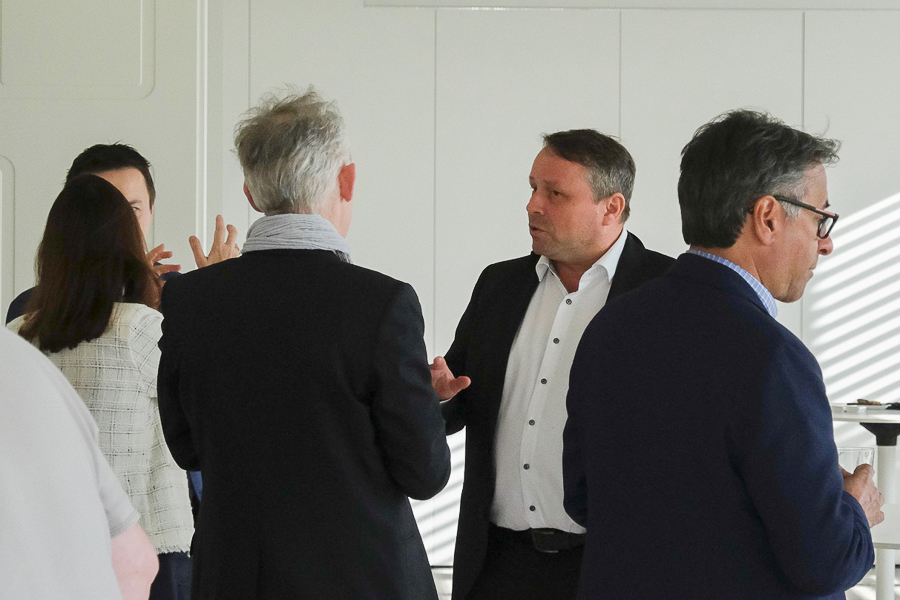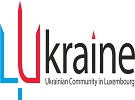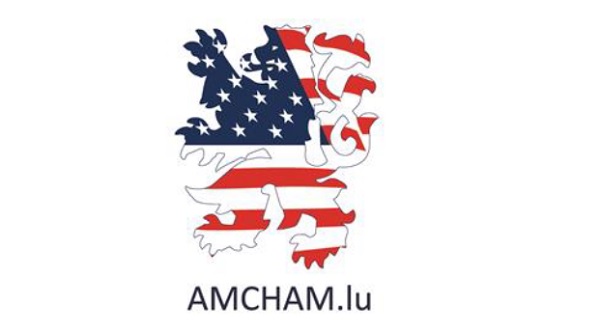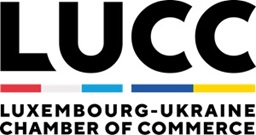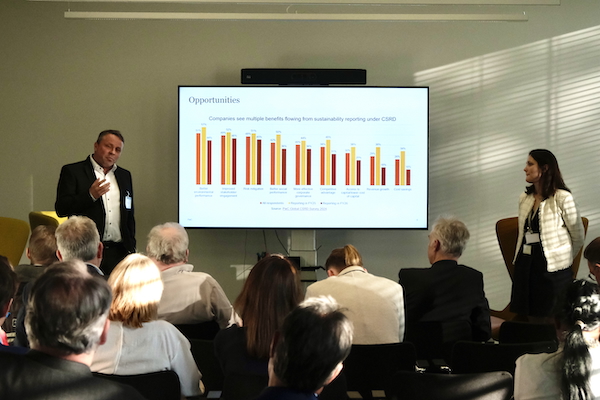 (L-R) Mike Van Kauvenbergh, Director and Head of Consulting ESG at Deveco (Atoz); Claire Cherpion, Director of Sustainability & Risk Assurance at PwC Luxembourg;
Credit: Steven Miller, Chronicle.lu
(L-R) Mike Van Kauvenbergh, Director and Head of Consulting ESG at Deveco (Atoz); Claire Cherpion, Director of Sustainability & Risk Assurance at PwC Luxembourg;
Credit: Steven Miller, Chronicle.lu
On Tuesday 6 May 2025, the Association of British and Irish Accountants in Luxembourg (ABIAL) held a seminar on corporate social responsibility (CSR) at PwC in Luxembourg-Gasperich.
The event addressed the implications of the current status for companies in Europe and Luxembourg with respect to their businesses, competitiveness, changing consumer behaviour and attitudes to the trends in environmentally related initiatives. It featured speeches by Director and Head of Consulting ESG at Deveco (Atoz), Mike Van Kauvenbergh, and Director of Sustainability & Risk Assurance at PwC Luxembourg, Claire Cherpion.
The topics discussed included the original objectives of CSR, the current status of CSR legislation, the current challenges and opportunities available from CSR and the impact of market reactions in the face of an unpredictable economic, social and political environment.
General Secretary of ABIAL, Mervyn R Martins, first introduced the guests and described his efforts in securing them for the event. He also detailed the challenge he put to take the subject of CSR “back to basics”and to look at “how we are actually achieving what we set out to do”.
Claire Cherpion began with an introduction to CSR, providing details of a survey which looked at the issues experienced by companies in complying with CSR regulations. She then followed this by providing details on decarbonisation pathways, Sustainable Finance Disclosures Regulation (SFDR), the importance of recognising due diligence within the value chain, the impact of the Non-Financial Reporting Directive (NF1) and the creation of the Corporate Sustainability Reporting Directive (CSRD).
The conversation then moved on to discuss decarbonisation of the economy, business investment, the incentives for fulfilling CSR responsibilities, how the data requirements for CSR legislation are defined and the challenges involved in reporting at a company level, where the data requirements vary from industry to industry, and at a country level, with several EU countries yet to transpose CSR legislation into law.
Mike Van Kauvenbergh subsequently discussed the risks associated with climate change. He touched on the issues within value chains and how recent severe weather events in Spain had impacted tens of thousands of companies outside of the areas immediately affected by the weather events. Other risks discussed included those involving policy transition and legal requirements, where changes in regulation can have economic impacts on a company and its value chain, as well as the issues of market volatility.
The topic then shifted to pollution, de-carbonisation and resource efficiency. When discussing the economic gains which can be made from transitioning to low emission energy sources, Mike Van Kauvenbergh gave the example of the increase in profitability of a Canadian pension fund which chose to invest more in renewable energy instead of fossil fuel companies. This moved the conversation into areas relating to procurement and investment and how markets see value when CSR becomes integral to the reputation of businesses.
In discussing the subject of carbon accounting, Mike Van Kauvenbergh presented information relating to the Greenhouse Gas Protocol and detailed how this impacts a company’s value chain in ways beyond the immediate creation of emissions. As an example, he noted that companies have to consider not only the emissions created through the use of company cars but also the manufacturing of those cars, the type of fuel they use, the methods used to extract that fuel and the carbon footprint of the life of the vehicle. He noted how this extends into areas such as how electricity is generated for a company’s premises, how company waste is handled, the various carbon footprints of raw materials used in the creation of products and how those products are distributed and delivered to other companies and, ultimately, to a company’s customers.
Audience members then participated in a question-and-answer session before the event concluded with a networking session, where attendees were invited to enjoy drinks and refreshments while discussing the topics raised during the event.

